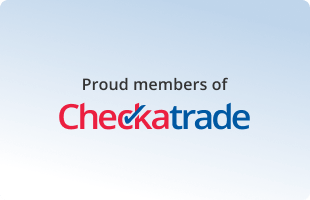A Foundation For Construction Site Safety
/FX Scaffolding Services Essex | Scaffolding systems facilitate efficient, convenient work and ensures the safety of passersby and workers. Careful planning, expert selection of scaffolding equipment and access points, weather-proof mounting and regular inspection are key elements with which the scaffolding erectors lay the foundation for safety on the construction site. In addition to a construction work frame, scaffolding can also acts as a protective shield used in restoration projects which require specialised safety screens.
Load Classes - A measure of the maximum load on a scaffold
The width and height of the scaffolding determines which areas of a structure make the scaffolding accessible. In order to select the required working framework, our expert scaffolding engineers must know the required payloads and the type of use, which will then define the required load class. TG20:13 has been issued as the industry technical guidance on the use of the European Standard BS EN12811-1 and applies to all tube and fitting scaffolds from the most basic to the most complex structure. For this purpose, EN 12811-1 provides the division into six load classes which describe the permissible uses of the scaffolding.
Load class 1:
A scaffold of load class 1 may only be used for inspection purposes. It carries one person per scaffolding field, as the superimposed layers between adjacent scaffolding stands are called.
Load class 2:
This scaffold is approved for work without the storage of building materials or components. These include painting, plastering, grouting or maintenance work.
Load class 3:
The most frequently used scaffold system is approved for low and evenly distributed payloads. Working with small amounts of material is possible with this scaffolding, such as painting, plastering, assembly or roofing. Material deposits are not permitted in this scaffolding class.
Load classes 4-6:
Load classes 4-6 differ in the maximum distributed load and partial load, but not in the work for which the scaffolds are approved. Heavy material may be deposited and stored on the pads. Scaffolds of the upper load classes are used in masonry, assembly and reinforcement work.
Other aspects for a safe scaffolding
Material and structural resilience are not the only aspects that builders and scaffolding engineers pay attention to in terms of safety. A working scaffold must be carefully planned, weather-proof and regularly inspected in order to ensure positional stability and load-bearing safety. In this way, the working rig is secured against tilting, lifting or sliding, so that hazards during operation are minimised.
Every scaffold, whether it is a working scaffolding, a protective scaffold, a formwork scaffold or a rolling mill, has its own specific characteristics, which the scaffolding erector is paying attention to. Thus, scaffolding engineers are an important link in the safety chain, which assumes both planning, construction, handover and control, as well as instruction of the persons who later work on the scaffolding.
Certainly well equipped - FX Scaffolding Services Essex
A safe scaffolding system protects all workers and passers-by involved in construction. Therefore as a construction site manager, you should select with utmost care a trustworthy scaffolding company.
At FX Scaffolding, we have a team of experts in scaffolding, renowned for their ingenuity and constant concern for safety. In addition to our highly secure scaffolding service, we have developed prevention and inspection programs that increase the value of our services. For more information on our services, in regards Scaffolding Rental in Essex, contact us today!




